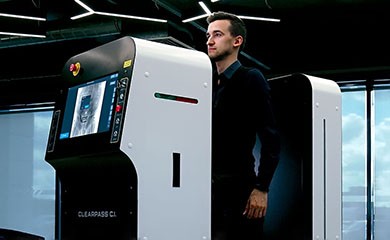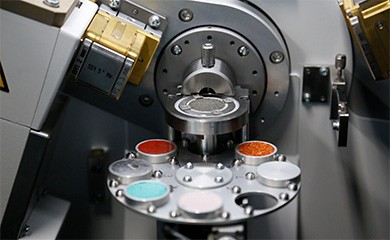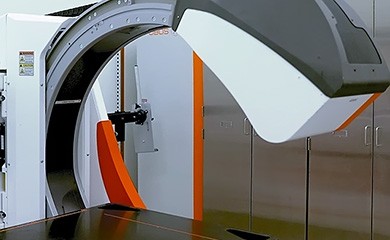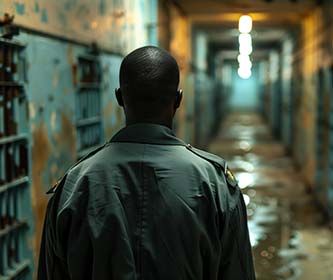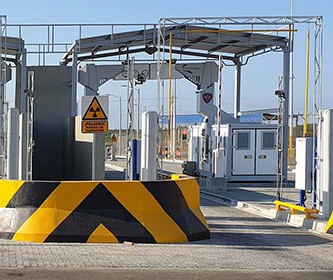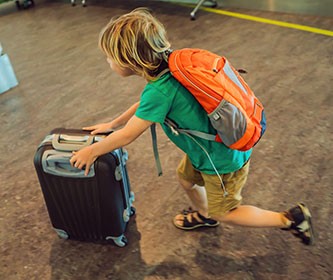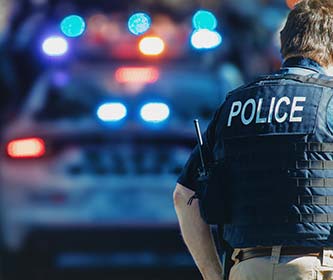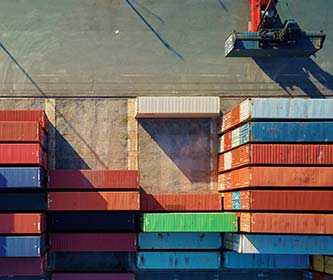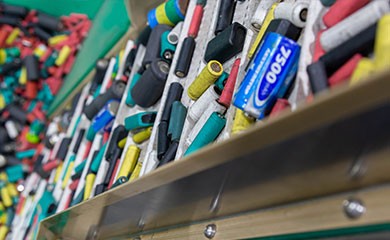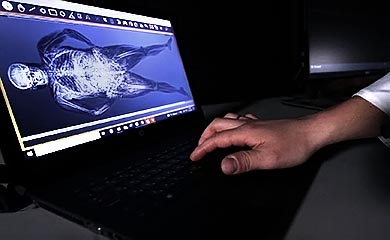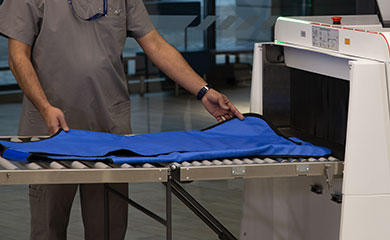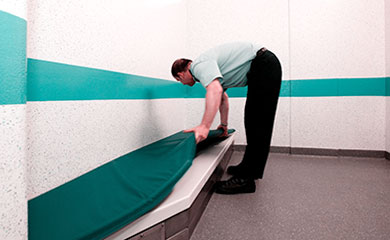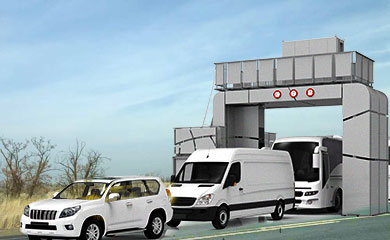
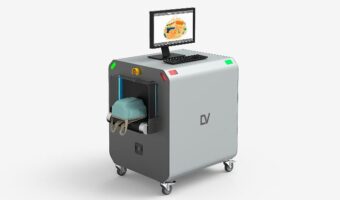
Small parcels and baggage inspection · AI-powered threat detection · Remote monitoring
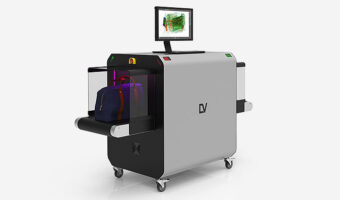
Small baggage inspection · AI-powered threat detection · Remote monitoring
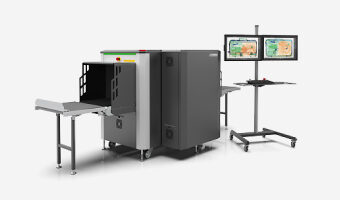
Small and medium sized baggage inspection · Improved detection by Dual View · AI-powered threat detection · Remote monitoring
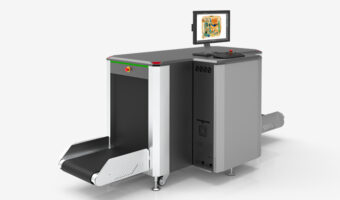
Medium sized check-in baggage inspection · AI-powered threat detection · Remote monitoring
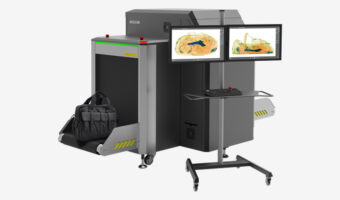
Mid-sized baggage inspection · Improved detection by Dual View · AI-powered threat detection · Remote monitoring
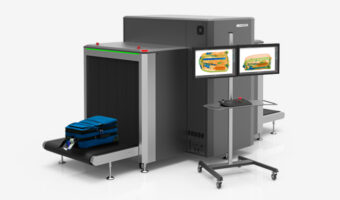
Large baggage and small cargo inspection · Improved detection by Dual View · AI-powered threat detection · Remote monitoring
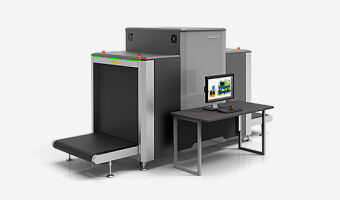
Universal large baggage and small cargo inspection · AI-powered threat detection · Remote monitoring
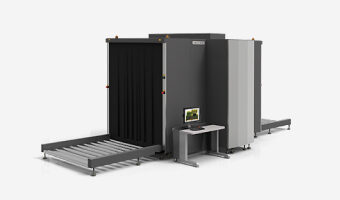
Heavy baggage, large packages and mid-sized cargo inspection · AI-powered threat detection · Remote monitoring
In response to contemporary security challenges in hold bags and luggage, LINEV Systems has pioneered the development of specialized inspection systems tailored.
X-ray luggage and bag scanners are used to ensure security and safety by detecting any prohibited or dangerous items concealed within luggage or bags. They are commonly employed in schools, embassies, airports, train stations, government buildings, and other high-security facilities to prevent the unauthorized transport of weapons, explosives, and other illicit items. These scanners provide security personnel with a non-invasive means of inspecting the contents of luggage, allowing them to identify potential threats quickly and efficiently. Additionally, X-ray scanners contribute to the overall security infrastructure by enabling thorough and systematic screening processes.

X-ray baggage scanners in the UK are security screening systems specifically created to inspect the contents of bags, backpacks, and luggage by using X-ray technology to produce images.
These machines provide various benefits, including:

X-ray baggage scanners in the United Kingdom are designed to detect hidden dangers like weapons, explosives, or illicit items, enhancing security measures and averting potential risks.

X-ray baggage scanners provide a non-intrusive method for examining items without requiring direct physical contact or labor-intensive manual inspections. This helps to minimise disruptions for individuals and lowers the chances of harm to the scanned items.

X-ray baggage screening systems in the UK are created to efficiently examine baggage and suitcases, decreasing the time spent on manual inspections. This improves the movement of individuals and goods, especially in busy locations like customs checkpoints, borders, ports, courthouses, airports, mail processing centers, stadiums, and other similar areas.

Contemporary X-ray baggage scanners offer sophisticated imaging features that can precisely detect questionable items and substances, encompassing organic and inorganic materials.

X-ray baggage screening systems in the United Kingdom can be smoothly combined with additional security measures and technologies, like access control systems or video surveillance, to create a robust security infrastructure.

X-ray baggage screening systems are equipped with intuitive interfaces and supported by thorough training and assistance, allowing security staff to use the equipment effectively and analyse X-ray images.
When selecting a baggage X-ray screening system in the UK, it’s essential to take into account the following factors:
Assess your facility or organisation’s unique security requirements. Determine the necessary level of threat detection and consider any industry-specific regulations or standards that must be followed.
Evaluate the anticipated amount of luggage for screening in the UK. Select a screening system to manage the expected flow without creating bottlenecks or interruptions.
Search for screening systems equipped with cutting-edge imaging technologies that generate high-quality, detailed images to identify potential threats accurately. Consider features like dual-energy imaging and the ability to distinguish between organic and inorganic materials, as these can improve the system’s detection capabilities.
Seek out user-friendly interfaces and intuitive controls that enable operators to interpret X-ray images efficiently. Training requirements should be reasonable, and comprehensive documentation should support the system.
Evaluate the screening system’s compatibility with other security systems and technologies, such as access control, video surveillance, or alarm systems. Integration can enhance overall security effectiveness and streamline operations.
The fastest way to hear back from us is to fill the contact form below. Our appropriate department will get back to you depending on your inquiry as soon as possible.
Get X-ray baggage scanner in the United Kingdom
In X-ray images captured by baggage scanners in the UK, a range of items and materials are visible, including:
- Metallic objects: Baggage scanners can effectively detect metal items like weapons, knives, firearms, or components of explosive devices.
- Organic materials: X-ray baggage inspection systems can differentiate organic materials, aiding in identifying items like food, drugs, or hidden organic substances that may pose security risks.
- Inorganic materials: X-ray images can reveal non-organic substances such as plastics, ceramics, or synthetic materials, assisting in identifying various items and their components.
- Liquids: X-ray bag inspection systems can detect liquids, which is important for security purposes to identify containers holding hazardous liquids or prohibited substances.
- Dense objects: Materials with high-density or tightly packed objects appear as darker or opaque areas on X-ray images.
- Contraband Items: X-ray scanners can expose prohibited items like drugs, explosives, weapons, or smuggled goods.
- Concealed or hidden objects: X-ray scanners can identify intentionally concealed items, such as weapons or illicit substances, within luggage.
Different factors, including system capabilities, size, capacity, technology, compliance with regulations, and ongoing maintenance and support expenses, influence the cost of baggage X-ray inspection systems in the UK. Moreover, customisation or integration with existing security systems could lead to additional costs for engineering, installation, and integration services.
Parcel and baggage X-ray scanners are utilised in various industries and environments. Common applications include:
- Educational institutions: X-ray bag scanners are installed at school entrances to screen the bags and possessions of visitors, parents, and staff entering the premises, enhancing security and preventing unauthorised items from entering the school grounds.
- Government facilities: These scanners are used at buildings, embassies, and courthouses to examine incoming mail, packages, and visitor belongings for potential threats.
- Events and public spaces: Bag X-ray scanners screen bags and personal belongings at stadiums, concert venues, and public events to ensure the safety of attendees.
- Commercial buildings: inspection systems can be found at entrances of corporate offices, high-security facilities, or sensitive areas within buildings to screen visitors’ bags and belongings.
- Airports: baggage scanners are widely used at airport security checkpoints to inspect passengers’ carry-on luggage, checked baggage, and cargo shipments.
- Correctional facilities: X-ray scanners are employed within prisons and correctional facilities to examine incoming goods for contraband items.
- Hospitality industry: these systems may be used at hotel entrances or baggage storage areas to enhance security by scanning guests’ luggage and belongings.
- Military installations: X-ray scanners are deployed at military sites to check vehicles, personal belongings, and supplies for potential threats or contraband items.
These examples highlight the various uses of parcel and baggage X-ray scanners. The specific deployment of these scanners depends on the distinct security requirements and regulations of different industries in the UK.
